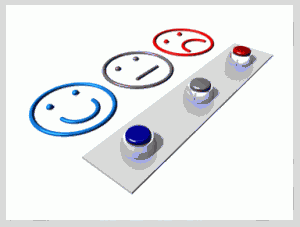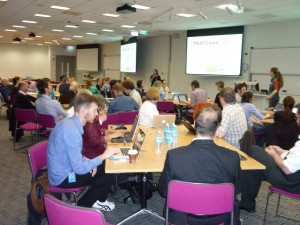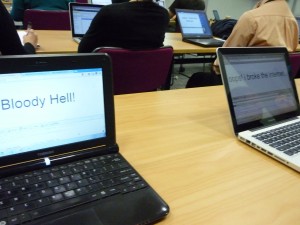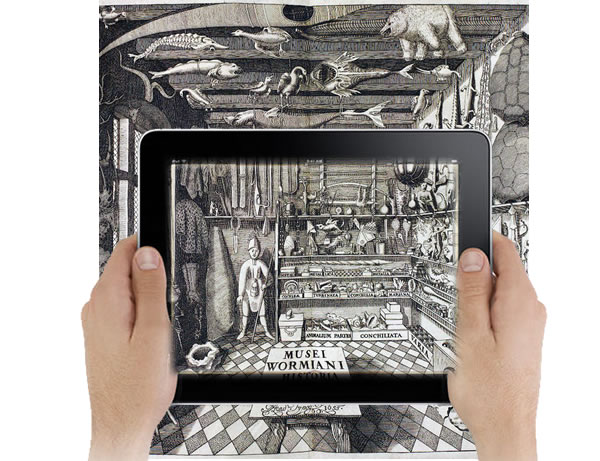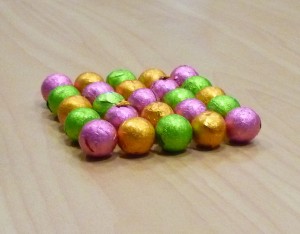
1. Just do it
We hadn’t been to a THATCamp, but we had envied them from afar and thought it was about time we had one in New Zealand. If you know of some people in your region that would be keen to attend one and spread the word, go ahead and organise one!
The THATCamp website provides just about all the information you need – from registering your THATCamp to evaluation – and their fantastic support staff are available to answer your questions.
There are also a number of THATCamps popping up that focus on particular topics, so there’s nothing stopping you from running a THATCamp Digital Collections or a THATCamp New Zealand History for example. You might also consider scheduling the event alongside a conference, which will enable more people from out of town to participate.
THATCamp W12 ran the day after the National Digital Forum conference. This made for a magical mix of Humanities scholars, cultural heritage practitioners, information professionals and web stars from around the world, and a melting pot of challenging topics.
We had about 45 campers on the day, and split the group over 4 topics each session, which worked pretty well. If you have fewer people you could split the group over 2-3 topics each session.
2. Rally the troops (and the funding)
Rally the people who are willing to provide ideas, support, funding and feedback, and build yourself a THATCamp team. These may be people from different institutions and even different countries, and that’s all good – THATCamp is a brilliant opportunity for collaboration. On behalf of the W12 campers, many thanks to these wonderful people for helping to make it happen:
- Sydney Shep, Wai-te-ata Press, Victoria University of Wellington
- Jonny Flutey, Information Technology Services, Victoria University of Wellington
- Tim Sherratt, Digital Historian, University of Canberra
- Matthew Oliver, Ministry for Culture and Heritage/National Digital Forum conference organiser
- James Smithies, Digital Humanities, University of Canterbury
3. Re-use/remix other THATCamps
Don’t reinvent the wheel. The THATCamp website lists those who have gone before you, and you can delve into their blogs, Google docs, survey results, Zotero folders and Twitter feeds. Check out what they’re doing, how they’re doing it, what worked and what didn’t.
You might have already noticed the footer of this blog – “All text and code on THATCamp Wellington 2012 is freely available for you to use, copy, adapt and distribute under a Creative Commons Attribution 3.0 Unported License as long as you link to THATCamp.org and the Center for History and New Media.” – so don’t be shy.
Special thanks to THATCamp Canberra 2011 and THATCamp Bay Area 2010 for the information and inspiration.
4. Talk to someone who has done it before
I had been fortunate to attend the LODLAM barcamp in Nov 2011, so I had a wee bit of a clue but not much. What is a THATCamp like? What will people expect? While there’s no shortage of online resources, sometimes you just need to have a chat.
From what I know of THATCamp organisers, they’re a friendly bunch more than willing to help, so go ahead and ask. On that note, BIG thanks to Tim Sherratt (THATCamp Canberra 2011) for all his advice from start to finish.
5. Get in the zone
Jon Voss (THATCamp Bay Area 2010) recommended the book Open Space Technology : A User’s Guide by Harrison Owen. I found this extremely helpful for getting into the right frame of mind for organising a THATCamp.
While I (ahem) forgot some of the key points of OST on the day (having read it several months prior), I would aim to make better use of this approach next time I’m involved in an unconference.
6. Myth-busting: Unconferences don’t need organising
Whenever you bring people together there is always a certain amount of organization involved: time, place, space, wireless access, furniture, food, communications etc. THATCamp HQ provides a checklist, which I clutched to my chest for several weeks, and I created a Google spreadsheet for venue-specific things-to-do, which Sydney and I checked off in the couple of weeks leading up to the event.
And then there’s the organisation on the day.
If I could do THATCamp W12 over again, the first thing I would simplify is scheduling sessions. In my absurdly optimistic fashion, I envisaged a THATCamp where no one would miss a session they wanted to attend because of a clash. I know. It’s impossible (duh). Fortunately a much more sensible mind (thanks Sydney) was there to suggest that we simply order the topics by popularity, and endeavour to ensure the most popular topics don’t clash.
Borrowing the words of Michael Lascarides, this is a case of having a better problem. First problem: NZ has never had a THATCamp. Better problem: People at NZ’s first THATCamp want to go to two sessions at the same time.
The second thing I would simplify is catering. This is no reflection on the yummy treats provided by Good Chemistry, but more a question of how you want to spend your time (and that of your helpers) on the day. If you don’t have the funds, I say run THATCamp any way you can, and point participants in the direction of the closest cafe. If you do have the funds, keep it real simple (read: cold food), so you can keep time spent in the kitchen to a minimum.
7. Ask for help
When people offer to help, say YES! Even if you don’t know how they can help just yet, say YES. Make a list of all the wonderful souls who offer their assistance in the lead up to the event, and when it suddenly dawns on you that you only have one pair of hands, delegate!
Big thanks to the W12 campers behind the scenes who we couldn’t have done without:
- Katherine Clarke
- Flora Feltham
- Vanessa King
- Sienna Latham
- Lucy-Jane Walsh
8. Go with the flow
Harrison Owen’s Open Space Technology includes 4 key principles that I like to think of it as THATCamp zen:
- Whoever comes are the right people
- Whatever happens is the only thing that could have
- Whenever it starts is the right time
- When it’s over it’s over
A fly-by-the-seat-of-your-pants unconference was a big challenge for a control freak like me, and keeping these principles in mind really helped. I did struggle with the last one though – THATCamp W12 was so much fun I didn’t want it to end!
9. Share the experience
THATCamp is not a case of what goes on tour stays on tour – it’s about teaching, learning, and sharing knowledge. By making use of the THATCamp W12 blog, the twitter hashtag #thatcamp #wgtn12, campers’ websites, numerous Google docs and other digital tools, we opened up the event to the wider community.
From an organiser’s perspective, it’s important to alert campers to the key tools and communication channels, and explain how they can be used. This way, everyone can contribute to sharing the THATCamp experience.
Sienna Latham has compiled a list of THATCamp W12 workshops and sessions along with relevant links, which she’s happy to add to/amend/update on request. Thanks Sienna!
10. Do better next time
Early on I trawled some of the evaluations of past THATCamps to get a feel for what was important to participants. Boy, are people obsessed with food!
While the surveys gave me a starting point, what it really came down to was scaffolding for participation as best I could, so that campers could get the most out of the day. The proof of the pudding will be in the post-W12 survey – more on this later.
For me though, it seems that the test of a good THATCamp is not the catering or the wireless speed, the length of the sessions or the venue. It’s about making connections with other people and those very special light-bulb moments. I figure if there was a generous sprinkling of those, it worked.

